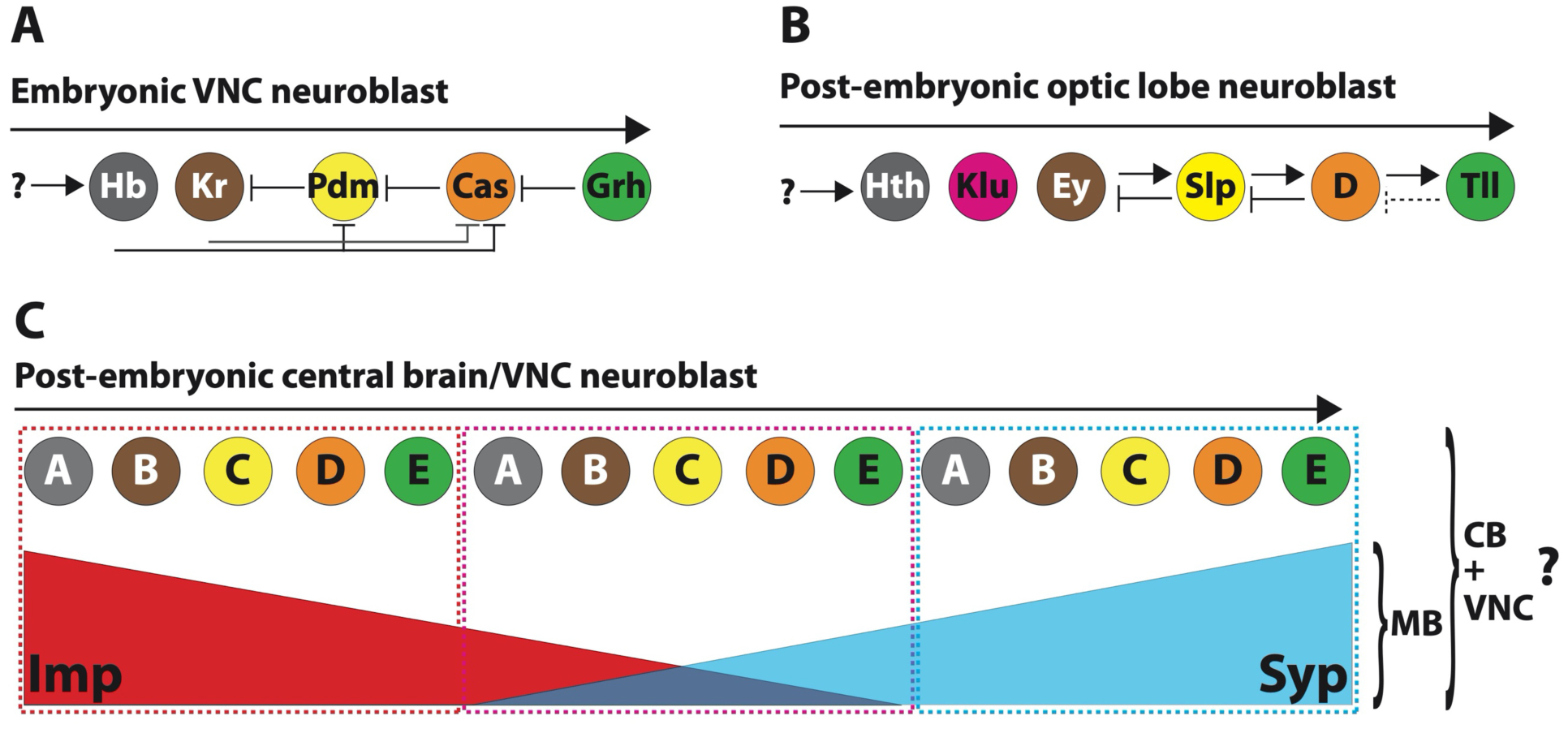Figure 2. Temporal patterning programs that operate in embryonic VNC, post-embryonic optic lobe, and post-embryonic central brain/VNC neuroblasts.

A. Most embryonic VNC neuroblasts progress through a series of five tTFs over the course of 10–20 divisions. Repressive interactions between the tTFs are partially responsible for allowing the intrinsic “clock” to “tick”. It is unknown what initiates the temporal series. Hb: Hunchback; Kr: Kruppel; Pdm: POU domain protein 2; Cas: Castor; Grh: Grainy head.
B. A similar series but with different tTFs operates in medulla optic lobe neuroblasts, which also divide an estimated 15–20 times. Here, some tTFs activate the next factor in the series and repress the previous factor. It is unknown what activates Hth to initiate the series. Hth: Homothorax; Klu: Klumpfuss; Ey: Eyeless; Slp: Sloppy Paired 1 and 2; D: Dichaete; Tll: Tailless.
C. Post-embryonically, central brain and VNC neuroblasts express the RNA-binding proteins Imp and Syp in opposing temporal gradients through time. At this stage, most neuroblasts divide ~50 times, except for mushroom body neuroblasts that divide ~250 times. Imp and Syp gradients alone are necessary for specifying the three main neuronal types produced by mushroom body neuroblasts. In all other central brain and VNC neuroblasts that produce many more neuronal types, it is possible that Imp and Syp act at the top of the temporal patterning hierarchy and that neuroblasts progress through tTF series, that could repeat, as they age. Imp: IGF-II mRNA binding protein; Syp: Syncrip; CB: central brain; VNC: ventral nerve cord.
